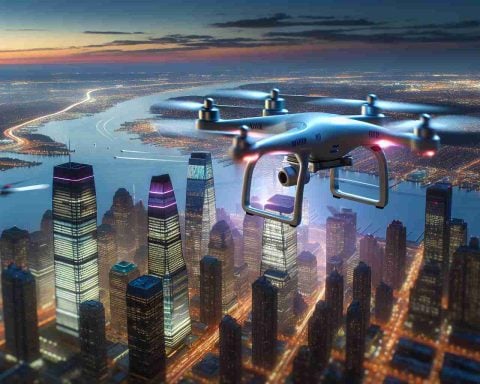Could a recent viral video possibly deceive us? Sightings of unidentified flying objects have captivated millions, but sometimes, they’re mere illusions.
On January 6, a video allegedly depicting a UFO crash in Arizona took social media by storm. Initially shared on Instagram by a user known as sybervisions_, the one-minute-and-18-second footage features individuals donned in hazmat suits who seemingly belong to government agencies. They scrutinize a mysterious object that appears circular and jade black while conversing and capturing photographs. This entire scene is cordoned off with yellow tape, adding an air of authenticity.
The video has garnered over 2.4 million likes, igniting a heated debate online about its credibility. However, it has been revealed that the clip was fabricated using advanced artificial intelligence technologies.
This incident is not unique; numerous purported UFO sightings have echoed similar patterns, many being proven as AI-generated fabrications. Historical reports also back this phenomenon, recalling an alleged UFO crash near Kingman in 1953. Public fascination remains high, but it’s crucial to approach such content with skepticism.
In a landscape filled with altered realities, the line between fact and fiction continues to blur. As technology evolves, so too does the art of deception in the realm of UFO sightings. Can we still trust what we see?
Debunking UFO Videos: The Rise of AI Fabrications
Understanding the Impact of AI on UFO Sightings
The fascination with unidentified flying objects (UFOs) has reached a fever pitch in recent years, fueled by social media and viral videos. One recent incident that exemplifies this captivating yet confusing phenomenon occurred on January 6, when a video claiming to show a UFO crash in Arizona gained immense popularity. Uploaded by Instagram user sybervisions_, the footage features people in hazmat suits inspecting a mysterious object. While the excitement surrounding the video is palpable, emerging evidence suggests it is likely a product of advanced artificial intelligence technologies rather than real footage.
The Mechanisms Behind AI-Generated Content
As AI technology progresses, it becomes increasingly capable of creating convincing audiovisual content. Tools for generating synthetic imagery and videos, such as deepfakes and generative adversarial networks (GANs), are at the forefront of this transformation. These technologies enable creators to construct realistic scenes that blur the lines between reality and fiction, leading to widespread confusion and misinformation regarding UFO sightings and other extraordinary claims.
Pros and Cons of AI in UFO Content Creation
# Pros:
– Increased Engagement: AI-generated content can create viral moments, capturing public imagination and generating discussions about UFOs.
– Entertainment Value: These videos can serve as intriguing entertainment, sparking curiosity about extraterrestrial life and scientific inquiry.
# Cons:
– Misinformation: The ability to fabricate convincing footage raises concerns about the spread of false information, leading to public distrust in media.
– Skepticism Towards Real Evidence: Genuine UFO sightings may be dismissed due to a growing number of AI-generated fakes, further complicating efforts to investigate legitimate phenomena.
Analyzing Historical Context and Trends
Historically, the phenomenon of UFO sightings has often intertwined with social and technological trends. For instance, the infamous Kingman UFO incident in 1953 led to widespread speculation and fear, much like the current internet-driven excitement. With modern-day technology enabling even more sophisticated fabrications, the historical allure of UFOs is meeting new challenges in verification.
Security and Ethical Considerations
The proliferation of AI-generated content raises several security and ethical issues. Governments and organizations are increasingly concerned about digital misinformation impacting public perception and safety. As AI technologies become more accessible, the risk of malicious or misleading campaigns centered around UFOs and other sensitive topics could increase.
The Future of UFO Sightings in the Age of AI
As the line between reality and AI-generated fabrications continues to blur, it is essential for viewers to approach UFO content with critical thinking. The future may see growing demand for authenticity verification tools that employ AI to distinguish between real and fabricated content.
Conclusion: Navigating the New Reality
While the allure of UFO sightings remains, distinguishing between factual reports and AI-generated illusions is paramount. The evolution of technology must be matched by a corresponding evolution in critical analysis and skepticism among the public. In this digital age, understanding the capabilities and limitations of AI in content creation is key to separating myth from reality.
For more insights and updates on the ongoing discussions surrounding UFOs and technology, visit Science Daily.



















